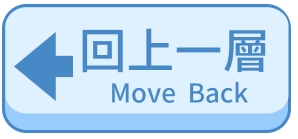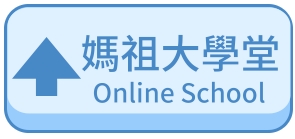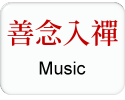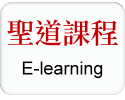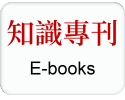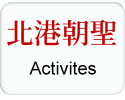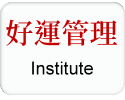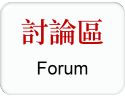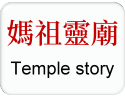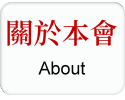如何透過本書解讀六十甲子籤詩
如何透過本書解讀六十甲子籤詩?首先要了解一般籤詩內容結構及本書的解籤程序內容。
本書的籤詩內容、結構及解說籤詩的程序與安排,是經由筆者施顧問收集並參閱坊間許多流傳的籤詩解說書本,作為參考,經由北港朝天宮資深解籤老師提醒,解說每一首籤詩所傳遞的重點訊息:「天時、地利、人和」。再加上 媽祖慈悲的指示說:「籤詩沒有所謂好壞、吉凶之分!」,每一首籤詩之中都具有教導信徒如何趨吉避凶的方法及建議。
How to Comprehend the Sixty Sacred Poems
How does one interpret the sixty poems through this book? First of all, one must understand the main framework of the poems, context of the poems, and the process of interpreting the context.
The context, framework, and arrangement of the poems were all referenced to many of the folklores and stories spread across different places. And Consultant Shih collected and organized these into an universal, well-rounded version. The most important message that the exegesis is meant to tell is that there is no good or bad sign but the corresponding methods to deal with each distinct situation one may encounter in life.
籤詩內容結構七大項目
1.籤序
籤詩排列的順序,一般採用天干地支來排列,為讓信徒易於找到籤詩,以天干「甲」、「乙」、「丙」…,陸續掛列,即「甲子」、「甲寅」、「甲辰」、「甲午」、…,「乙丑」、「乙卯」、「乙巳」、「乙未」、…,「癸酉」、「癸亥」。依此順序編為號碼籤序。
2.籤詩故事
籤詩的創作,因三百年前,知識未發達,社會上文盲居多,故以民間熟悉的歷史故事及流傳戲曲來表達神明的旨意。求籤者僅須想像自己是戲劇中的主角,就可知道現在、未來遭遇狀況的吉凶演變。三百年來,陸陸續續再經由有心推廣籤詩文化的文人,以扶鸞問事的方式感應而修正編成。坊間廟宇的籤詩大部份只有一個故事來表示,彼此的差異相當大。本書中的新籤詩,將坊間使用的故事,經由擲笅一一向 北港媽祖確認,補充的很完整。
3.籤詩詩文
詩文內容為籤詩的主體,參考各籤詩故事的內容重點,以四句七言絕句來表達神明的旨意,蘊含許多玄妙勸世指導的哲理,為解籤的主要依據。因籤文是憑神來一筆的靈感或神明降駕扶鸞指示方式寫成,所以,其詩格的嚴謹性沒有那麼的標準。再經幾百年的流傳抄錄或修改,各廟的籤詩中的某些字就有不同,但字義相差並不太大。本書增加的新籤文,為 媽祖因時代背景不同的需要,補充原詩文的旨意,以擲笅方式,三聖笅確認寫成。本書原詩文主體採用北港朝天宮的版本,但筆者參考各版本,比較不同版本的異同後,依新籤文的聖意及邏輯,整理寫成本書的原籤文的內容。筆者遵從 育德媽祖的教誨,「凡事沒有對錯,只是適不適合而已。」。建議信徒有緣查閱到那一種版本,您就使用此版本即可,莫太在意那一版本的字用的對錯,一切以向神明擲笅確定旨意為準。
4.卦象
古時文人將六十籤詩表達哲理涵意,配對易經六十四卦象,作為解籤補充的依據,藉以得到更多神明的旨意。卜卦問事的說明,皆以易經六十四卦象為主,故文人依卦象更能深入為信徒解說籤意並指導方向。在本書中,讀者會發現 媽祖補充許多新卦象,但是,新、舊卦象的寓意是相互呼應、沒有衝突或矛盾,更完整補充新、舊詩文、籤圖與故事所要傳遞的信息與教育。
5.籤圖
古時,有心推廣籤詩文化的文人,參考詩文內容、籤詩故事、卦象哲理涵意…等,以一個圖像來表達神明的重要提醒。籤圖的解說為本籤很重要的依據,可撥亂反正此籤詩的解譯。本書每一首籤詩 媽祖都有補充新的籤圖,在解籤詩,須列為重要根據。
6.醒世警語
抽籤問事不只是卜問前途命運的吉凶而已,更甚者可以得到 媽祖的叮嚀與提醒。新籤詩並不是每一首籤詩都有加上一句醒世警語,但每一句醒世警語,都在教育我們處世為人之道,如何在人世間自處,可說是 媽祖對信徒最深切的教誨。
7.五行屬性
歸納依籤內容、易經卦象所述,訂定了各籤所屬的五行(木、火、土、金、水),再依五行所對應事項(時間、方位、顏色、…),直接解說有關適宜的季節時間、有利的方向與方位,很多首新籤詩中的五行與原籤詩不同,提醒信徒不可依五行屬性輕率推斷來解籤,應深入了解故事、詩文、卦象…內容,論斷其時間季節、方位地點,才能完全解出聖意。
以上為本書籤詩內容結構,原籤內容採用北港朝天宮的版本為主,加上鄭勝文先生感應神恩,一一擲笅修正、補充的新籤詩成為本書的主要結構內容。
經由筆者施勝台顧問整理構思,一一向 北港媽祖與 育德媽祖請示後,才決定本書解說籤詩寫作的程序及內容,以利信徒能徹底的掌握並了解聖意,得到正確完整的資訊與答案。
The Seven Parts of A Poem
1.Order
The order of the poems is arranged by the pairing of the Chinese decimal system and the Chinese duodecimal system. Each poem is named with a word from each of the two systems. For example, Jia Tz, combined by 甲 (Jia) 子 (Tz) from the decimal and duodecimal systems respectively.
2.Story
Because in the past three hundred years, knowledge and education were not common among the commoners, the contents of the poems were expressed through drama and famous historical events. One who asked for guidance only had to imagine himself or herself being the main character in the drama. However, as time went on, stories across regions differed from each other. To overcome this problem, the modern exegesis, after being verified with Matsu word by word, unifies all the details and provides an universally applicable contents.
3.Text
Besides being written in the seven-line stanza format, every poem represents a way, through the guidance of the gods, to deal with a specific type of situation. And because there have been quite a few generations of revisions, there is no stringent form, which usually is found within formal textbooks. Also, because an extremely stringent would likely limit the extent to which the text can express. In order to make the exegesis applicable and relevant to people, backgrounds of whom are mixed, these revisions are absolutely necessary. There, however, is an absolute rule to follow. The rule is that there is no such thing as right or wrong. There is only the concern of suitability.
4.Hexagram
The ancients resorted to the sixty poems to express their wisdom alongside with the sixty-four hexagrams to create a complete interpretation. When reading the modern and the ancient exegesis, one will discover the fact that there is no contradiction between the two. Rather, they correspond to each other, making the readers see an even more complete picture.
5.Picture
In the ancient times, pictures were used to represent express and solidify certain expressions. Therefore, pictures that summarize Matsu’s words are also attached as a part of the exegesis to achieve the same purpose as in the ancient times.
6.Matsu’s Words
Other than telling fortunes, the poems can also show you Matsu’s reminders and, sometimes, warnings. Not every poem is followed by a section of Matsu’s words. However, every section of Matsu’s words is meant to teach the true way of living in this very world. In other words, these are Matsu’s most sincere teachings.
7.The Five Elements
The five elements embody the messages in regards of the proper time, seasons, colors, locations, and directions, which stretch the extent of poems’ applications. Only with these pieces of information combined are the interpretations meaningful.
The above is the framework of the text. Respectfully and gratefully contributed by Mr. Jen’s efforts Consultant Shih’s revisions and interpretations.
籤詩七大解譯項目
1.原籤詩解譯
以白話文來解說原詩文內容,此解譯因為每個人的習性、心境不同,體會自然不同,解讀也會不同。筆者不斷重複參考原新籤詩文、易經卦象、籤圖寓意、籤詩故事、醒世警語…等,綜合其聖意,一改再改,期望以最客觀且最適宜的陳述,分享大眾。
2.新籤詩解譯
此解說可說是本書的精華也是最具挑戰的地方。 媽祖依原籤文修改某些文字,而修改的文字幾乎都是很艱澀難懂的字詞;並且,常常出現,彼此無關聯,沒有邏輯可循的字詞。筆者先請助理小姐,預先查出 媽祖改過的字,其注音及字義,再試著找出其中的邏輯及合理的解說。此項目為 媽祖為附和現代社會環境的變遷,所提出改變命運的建議。所以,筆者遵循此方向去推測思考,將新籤文不斷在大腦及心中反覆思索,透過「日有所思、夜有所夢」的原理,清晨醒來總會有靈感來解說 媽祖的新籤意。最艱難的新籤,曾經花了二十幾天解不出來,才由 媽祖透過一個夢境來指引而解開。本籤改運事項,主要重點都取自此項解譯,也是本書要表達的重點。
3.卦象說明
除原籤有一個卦象來對應比照每一首籤詩, 媽祖特又補充新卦象,經筆者擲笅詢問,確定舊、新卦象皆要納入解說籤詩的參考。筆者雖有深研、運用某些五術命理法門,但對於易經之認識相當粗淺,自己的生涯規劃中,預定六十歲開始學易經,真是巧合,在筆者59歲時,接到解此六十甲子籤詩的任務,不得不研究易經六十四卦象,筆者先了解卦象的寓意,再推測 媽祖在此籤詩中所要提示的重點,盡量用最少的字詞來表達卦象的寓意。此卦象可以說是 媽祖對信徒提醒及教誨,易經卦象蘊含著宇宙自然生命法則、人生哲理學問。因此, 育德媽祖指示,此本籤詩解說,可說是 媽祖教育的主要教科書,將為同修會須研讀課目。
4.籤圖寓意
每首籤詩都有一個籤圖,用來表示此籤的重點提示。大部份的籤詩, 媽祖都有出新籤圖補充。筆者參考其他內容,再依籤圖推測 媽祖要表達的聖意。表達的寓意盡量達到合乎邏輯、合乎一致性、合乎此首籤詩的重點。
5.籤詩故事與提示
籤詩故事在過去文盲居多的社會,在籤詩解說中,扮演極大的份量,經過時間的演化,到現在出現許多不同的故事版本,沒有整合統一,使得 媽祖信仰給人有紛亂爭議的印象。此新媽祖籤詩,另一個目的,就是希望以本書的整合解說,統一籤詩故事。
各地宮廟的籤詩大多採用一個故事,因此,易有不同。本書採用坊間所流傳的故事,一一向 媽祖確認,幾乎包含各廟所採用的故事。再經筆者簡述其故事的人、事、時、地、物,最後以故事的提示綜合故事的要點,以傳遞此籤詩的重要聖意。
6.醒世警語
不是每一首籤詩,都有 媽祖的醒世警語。這是 媽祖特別在這首籤詩的最後,提醒我們須注意的事項。如果,我們將所有的醒世警語匯集在一起,就能領會 媽祖教我們為人處世的道理。醒世警語其實都是平常生活中,師長們常常叮嚀我們,為人處世應注意的事項,充滿儒家教育的哲理。筆者再以白話文詳細說明,供大家參考。
7.關鍵字詞解說
針對各籤詩內容項目中,須具備的專業用詞及較難懂的字詞,一一作說明。尤其, 媽祖有修改的文字,都經由字典查詢,說明其音、義,供讀者參考、查閱。筆者依據所查詢出來的資訊,反覆經邏輯思考,解釋出各項 媽祖新的籤意提示,關鍵字詞的解說,是深入研究本書相當重要的部分。
以上七個項目解譯說明,是筆者將坊間通行的籤詩內容及 北港媽祖新修正補充的內容資料,加以收集、綜合、研究、分析、整理、歸納,再經思考、比較、冥想、推斷,期望不辱神意,能適當且正確,為信徒提供籤詩中,各項內容的白話說明、重點提示及涵意。依據這七項內容的解說,所提供的訊息,我們就可以完整得到 媽祖有系統的指示。
如何更完整的了解正確的籤意?可以由下面筆者所歸納、整理出來的四大重點項目,來掌握並了解 。
The Seven Parts of Interpretation
1.Original Explanation
The interpretation for the original version is in modern Chinese because ancient Chinese words, despite the simplicity, can be interpreted very differently from person to person. As a result, the authors underwent many revisions in the means of achieving the best overall subjectivity.
2.Updated Explanation
This part is the essence and the most challenging part of the entire process. An abundance of the words in the original poems are fundamentally irrelevant to each other, drastically increasing the difficulty in connecting the logic from word to word. As a result, the author had his assistant look up the modified words in the modern version of the poems before diving into connecting the logic together. This stage of the process is crucial because it is a process via which Matsu make changes that correspond to the differences between the ancient and modern societies. One of the poems even took over twenty days for the author to have a clue, which was given by Matsu in the author’s dream.
3.Meaning of the Original and Updated Hexagrams
In addition to the original hexagrams representative of the meanings for the poems, Matsu also placed updated hexagrams that correspond to the updated poems. Despite the author’s previous experiences with Chinese fortune telling, he was familiar with Yi Jing to a fairly limited extent. Before then, he had planned to learn Yi Jing by the age of sixty. Coincidentally, he received this mission at the age of fifty-nine and forced to look into the deeper meanings of Yi Jing. With the newly acquired knowledge, he was able to more complete figure out Matsu’s reminders hidden in the hexagrams. Because of these factors, the modern exegesis is arguably the most applicable and universal teachings of Matsu.
4.Picture Explanation
Every poem is followed by a picture as a summary of the reminders. Most of the poems are given new pictures, and these picture are meant to achieve valid, unified, and reasonable logics of the poems.
5.Implications
In the ancient times, many were illiterate, causing conflicts in the interpretations of the pomes. Therefore, another purpose of the modern exegesis is to unify the interpretations and improve the harmony among Matsu’s believers.
The stories in these poems are different in different regions and temples. To avoid such problem, there is no story chosen at the author’s whim. Each and every one of the poem and its story have been verified by Matsu through three positives after casting the moon blocks.
6.Matsu’s Words
Not every poem is followed by a section of Matsu’s words. However, every section of Matsu’s words is meant to teach the true way of living in this very world. In other words, these are Matsu’s ultimate reminders and most direct teachings. And Matsu’s words are also translated into modern Chinese by the author.
7.Key Words
There is a set of interpretations for every poem’s contents because every poem contains several words of great complexity. Specially true for the words modified by Matsu is the fact that every word is carefully chosen from Chinese dictionaries, embodying the most complete implications via the pronunciation, meaning, and form.
The seven parts above are the condensed, universal organization of all interpretations acquire by meditations, comparisons, deductions, analysis, and studies by different people from different places around the world in the hopes of providing the most applicable, clear, and respectful exegesis of the gods’ messages and Matsu’s education. To correct understand the modern exegesis, one may resort to the four points summarized by the author.
籤詩解說四大重點項目
1.順應天時
每一首籤詩都有提供有關時間的訊息,而這些訊息不是那一年、月、日、時辰?吉或凶,那麼單純! 媽祖補充的新籤文,提醒我們不能依過去,用五行屬性就論斷有關時間的訊息。如:已巳籤,原籤屬木,利在春天;新籤屬水,利在冬天。所以,此籤利在春、冬;另又提示只要有方向、定見,後面的時日就會很好;也指家庭融合,一起行善作福時,運勢就會轉好;另指具有男女姻緣、男女之歡時,運勢較好。本書提示更多的時間訊息,方能完整透露、表達出神的聖意。
2.把握地利
筆者歸納出 媽祖指示,至少四個以上的訊息,不僅指出方向、方位的吉凶?而且,提示不宜或適宜在什麼樣的環境?也有改善居家風水的建議。
3.尋求人和
此項不僅是 媽祖提醒我們人際交友的重點,也是我們修身處世,修養待人的教育。本書一直強調不僅是解籤的工具書,更是修行 媽祖聖道的教科書,此「人和」的重點,不僅是防小人、親君子的參考,更是 媽祖提示我們要努力修身處世的方向。
4.改運事項
本項重點是 媽祖新補充籤詩中,最大的慈悲。以往的籤詩只是指出時間、地方、運勢的吉凶,參考籤詩故事的主角遭遇,自己領會聖意。本書新籤詩文中,幾乎都有指出,如果,信徒正處在那一種困境,要如何趨吉避凶?如何解決問題?要有更好的狀況,要如何改善及努力?本書至少提供五個以上,具體且明確的建議。感恩 媽祖慈悲與智慧,每一首籤詩都是好籤,沒有壞的籤詩,都是 媽祖給我們的勉勵或提醒的籤詩。有些是努力有成,正處順境, 媽祖會加以鼓勵並暗示警訊,莫要得意忘形,更須謹言慎行,追求更大的成就。有些是正逢逆境,危機重重, 媽祖會告知原因,並提出具體的建議,讓信徒脫離險境。改運的事項是本書重點項目,除卜卦問籤者要詳細觀看外,有意學習媽祖聖道的同修,一定要研究此 媽祖為人解災的道法。
Four Critical Points of Interpretation
1.Seize All Opportunities
Every poem provides a specific period or point of time beyond the simple division of year, month, day, or hour. The most important message of these given times is that one must not cling on to the past. There are a lot more details in the book.
2.Details and Actions
Besides locations and directions, corresponding Feng Shui solutions are also included in this section by the author.
3.Work with People
This section is not only about balancing and dealing one’s own network and relationships, but also about true way of living in this world. To conclude, this book is not just a book of corresponding interpretations for the poems. It is a sacred book of the true practice of Dao, a Matsu’s reminder in regards of living one’s own best self.
4.Own Your Fate
The purpose of this is to point out that every poem, without the quality of good or bad, is Matsu’s compassion and wisdom that can guide one through different situations in life. Some messages provide both encouragements and warnings for those that are in flourishing stages in order to avoid being destroyed by arrogance. Some, on the other hand, provide reasons leading to dire or unfortunate situations and the corresponding solutions. As a whole, the contents of the modern exegesis provide constructive and practical advices for different people confronting different, both fortunate or unfortunate, circumstances.
二十九項重點概要解說
本書整理了,信徒常會詢問的有關事項,以「解籤概要」直接、簡單、明確的給予回答,以供參考。二十九項重點,幾乎包含了信徒所提問的問題。筆者,建議信徒不要僅看您所問的項目,也可以參考其他相關項目,加以聯想。您的答案會更完整、更具體。以下針對二十九項目一一作說明:
運途:針對最近一年,命理運勢的起伏、吉凶,概略描述。
求財:有關財運的起伏;投資、理財,謀求財富的建議。
求職:應徵工作、謀職時,其運勢及應努力注意的事項。
考試:參加影響一生前途的重要考試,其運勢及建議。
學業:在學習單位求學的人,其運勢及應努力注意的事項。
事業:指上班族在企業、工作中,其運勢及應注意的事項。
經商:指經營事業、作生意的人,其運勢及應注意的事項。
求才:企業覓才、求才、用才,其運勢及應注意的事項。
農牧:有關農稼、畜牧、養殖,其運勢及應注意的事項。
婚姻:未婚者詢問婚緣,其運勢及應努力注意事項的建議。
感情:已婚者,夫妻情緣狀況、運勢及應努力注意的事項。
人際:擇友、交友、人際往來,其運勢及應注意的事項。
官司:惹上官司,其運勢、前途預測及趨吉避凶的建議。
家庭:家庭成員整體的運勢、前途預測及趨吉避凶的建議。
六甲:生兒育女,有關小孩晚輩,其運勢及應注意的事項。
未孕:婚後許久未孕,求子,其運勢及應努力注意的事項。
買厝:購置房子、土地、不動產,其運勢及應注意的事項。
移居:搬家、遷移居住的地方,其運勢及應注意的事項。
出外:離開原居處,旅遊、發展,其運勢及應注意的事項。
墳墓:祖先墳墓風水的影響與運勢及應注意、留意的事項。
健康:平時應如何經營自己的健康,生活習慣的建議事項。
治病:已經生病了,治病的運勢及趨吉避凶方法及建議。
失物:遺丟重要物品,尋回的機率及尋找方法的建議。
尋人:尋找失去連絡的人,找到的機率及尋找方法的建議。
問人:建議對我們有幫助且適宜相處,提昇我們運勢的人。
問事:無論欲從事任何的工作,其運勢及應注意的事項。
方向:有關於有利我們運勢的方向、方位、地方的建議。
時間:有關於有利我們運勢的季節、時間、時候的建議。
改名:改名可以改變命運,可否改此新名的吉凶及建議。
29 Detailed Advices
The following twenty-nine points contain the most thorough details for the analysis corresponding to every aspect of life. These details may provide some ideas and inspirations for readers.
Future:summarized fate of the coming twelve months.
Wealth:the advices in regards of own wealth.
Job Search:what one should do when looking for a job.
Exam:advices and possible outcomes.
Education:what one in certain academic institution should do.
Career:what one who is working should pay attention to in own career.
Business:one who runs businesses should pay attention to.
Employing:details for companies that are looking for proper employees.
Farming:agricultural advices.
Marriage:one who is to be married may discover advices.
Relationship:things that the married ones should pay attention to.
Network:advices on choosing and interacting with friends.
Lawsuits:possible outcomes and solutions.
Family:the whole family’s possible future.
Pregnancy:advices on giving births or children.
Pregnancy (for the non-pregnant):advices for those trying to be pregnant.
House:advices on land or housing management.
Immigration:advices on Feng Shui and moving.
Traveling:advices on traveling or seeking different future in different places.
Grave:advices on graves.
Health:advices on health management.
Illness:advices on curing.
Lost Items:advices on searching the lost item(s).
Lost Individual:methods and advices for searching the lost individual.
About Others:methods to meet helpful ones.
About Things:the future trends of things bothering one’s mind.
Direction:advices on location or direction.
Time:advices on proper timing.
Changing Name:whether or not one should officially change own name.
最後重點提醒項目
六十甲子籤中,每一首籤詩,都各自有著 媽祖特別給的不同提示,針對信徒運勢狀況及所遭遇的問題,給予適當的回答。所以,最後綜合以上的解譯,濃縮、總結成「最後提醒」,來說明此首籤詩最主要的重點內容及特別要提醒信徒要努力注意的地方。並對於信徒最常提問的婚姻感情、身體疾病,給予再詳盡的回答說明。
Last Reminders
Among the sixty sacred poems, each one contains a distinct set of Matsu’s messages and guidance for the reader. Therefore, the section of “last reminders” is the condensed summary of a given poem.
|






